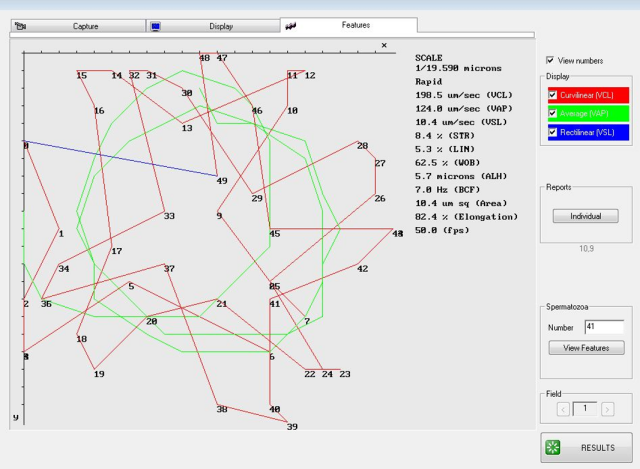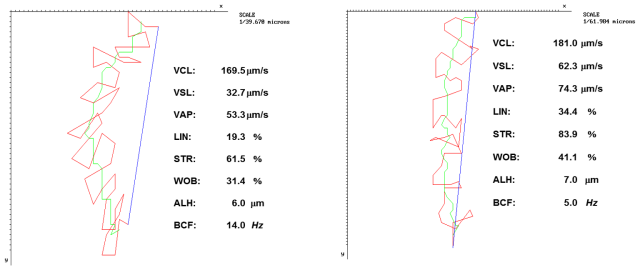Hyperactivation of sperm: A very important sperm functional test.
Semen quality is traditionally measured by determining sperm concentration, sperm motility,vitality normal sperm morphology and a whole range of other parameters. While these aspects are useful in terms of a record of baseline data it does not necessarily inform us about the functionality of the sperm. So what do sperm functional tests tell us and which tests are useful. Sperm functional tests are important since they reflect the crucial functions sperm need to possess to be able to fertilize the oocyte. A sperm needs to penetrate the cervical mucus, needs to undergo capacitation including the ability to become hyperactivated, undergo the acrosome reaction and penetrate the oocyte. Accordingly, these sperm functional aspects seem to be more important than sperm concentration, percentage sperm motility or normal sperm morphology as measured in the semen per se.
The only sperm functional test that has in humans and many animal species shown a positive relationship with fertilization success, clinical pregnancy and live birth outcome, is hyperactivation (HA). In humans it has been shown when there is more than 20% hyperactivation it indicates a potentially fertile male. What is hyperactivation of sperm? When sperm become hyperactivate they swim at speeds two to three times faster than in semen or culture medium, the tail beat changes from sinusoidal to large extreme tail bending which is also associated with large head oscillations and accordingly also a two to three times increase in the amplitude of lateral head displacement. The linearity in these sperm is generally less than 50% and the sperm path travelled occupies a large surface area. The final phase of hyperactivation is often referred to as starspin hyperactivation, as it resembles a star (See Fig. 1) LaniBurkman and Sharon Mortimer were amongst the important researchers to establish the CASA cut-off points in kinematic parameters for humans and initially used VCL, LIN and ALH for this purpose but recently Mortimer et al. (2015) has shown the importance of fractals as part of the Boolean argument to define HA. Why is hyperactivation required. There are many reasons, but the following three are crucial: 1. The large “search radius” of the sperm improves the changes for meeting the oocyte. 2. Most sperm seem to attach to the villi of the cells of the Fallopian tube (oviduct) as part of an important messaging system but then needs to become detached when ovulation occurs. This detachment can only happen when the sperm becomes hyperactivated. 3. Finally the force with which the sperm makes contact with the oocyte allows not only attachment to the oocyte but also for the acrosome reaction to take place. Van der Horst and co-workers have also shown methods to establish cut-off points for HA in different wildlife species.
Hyperactivation cannot be quantified without the help of CASA. How are these tests performed? A capacitating medium is used as control and this medium that will actively stimulate hyperactivation but contains caffeine, pentoxyphylline, methoxyphylline, progesterone and even procain hydrochloride usually in concentrations from about 2mM to 10mM, depending on the stimulant. Essentially in all the above cases, calcium ion moves actively from the outside to inside the sperm cell. In the Sperm Class Analyzer- SCA® , the sort functions for accurate determination of HA has been included as part of sperm functional tests, such as sperm cervical mucous penetration.
It is clear that in future development of sperm functional tests will become increasingly important as is already the case with the SCA® system.
It is believed that in the future we will be able to define fertility in a male much better using these tests than by just using the traditional semen parameters.

Fig. 1: Starspin hyperactivation of human sperm showing a VCL of 190um/s, LIN 5.3%
and an ALH of 5.7um but equivalent to 11.4um in CASA systems using for ALH = 2 x ALH
HA = VCL>150µm/s; LIN<50%; ALH>3.5/7

Fig. 2: Early hyperactivation tracks
Gerhard van der Horst (PhD, PhD)
Senior Consultant
MICROPTIC S.L.




Leave A Comment